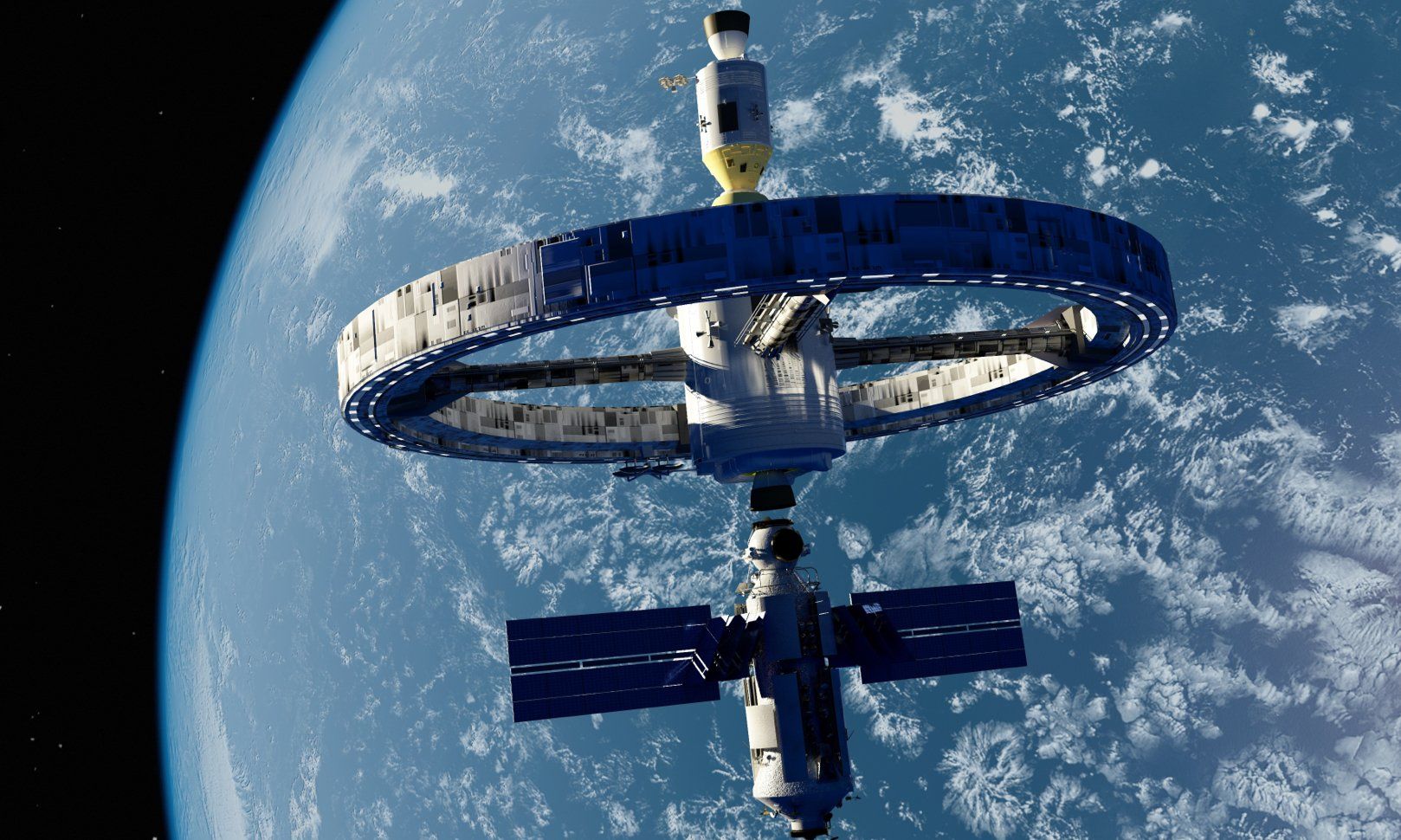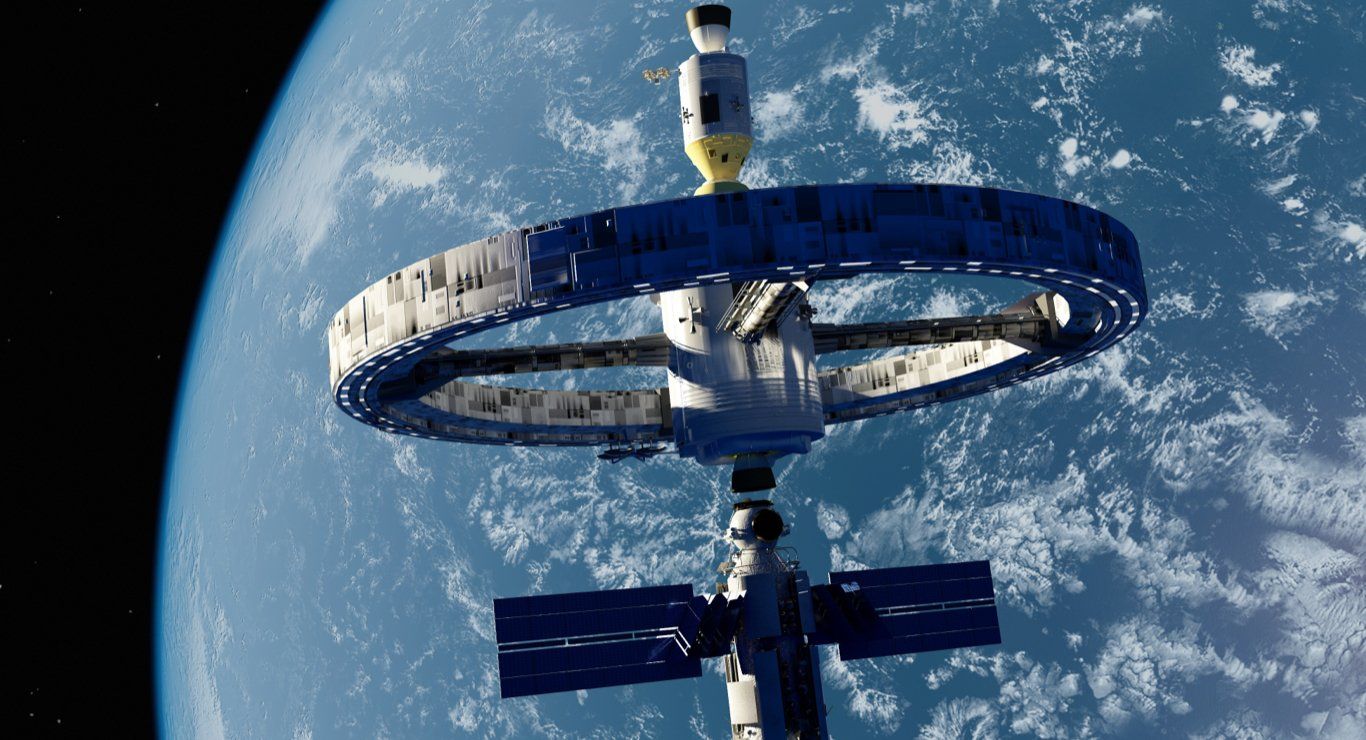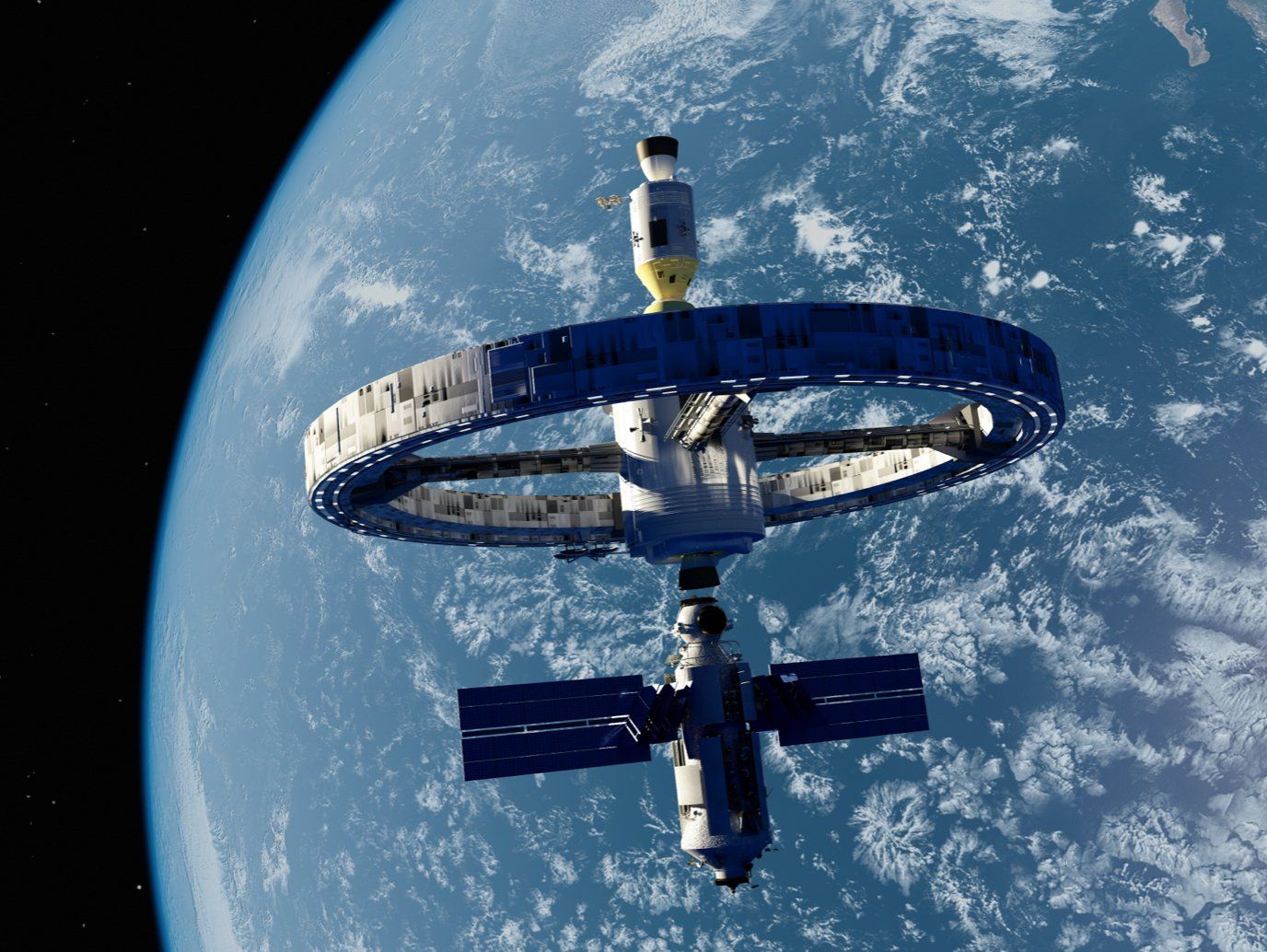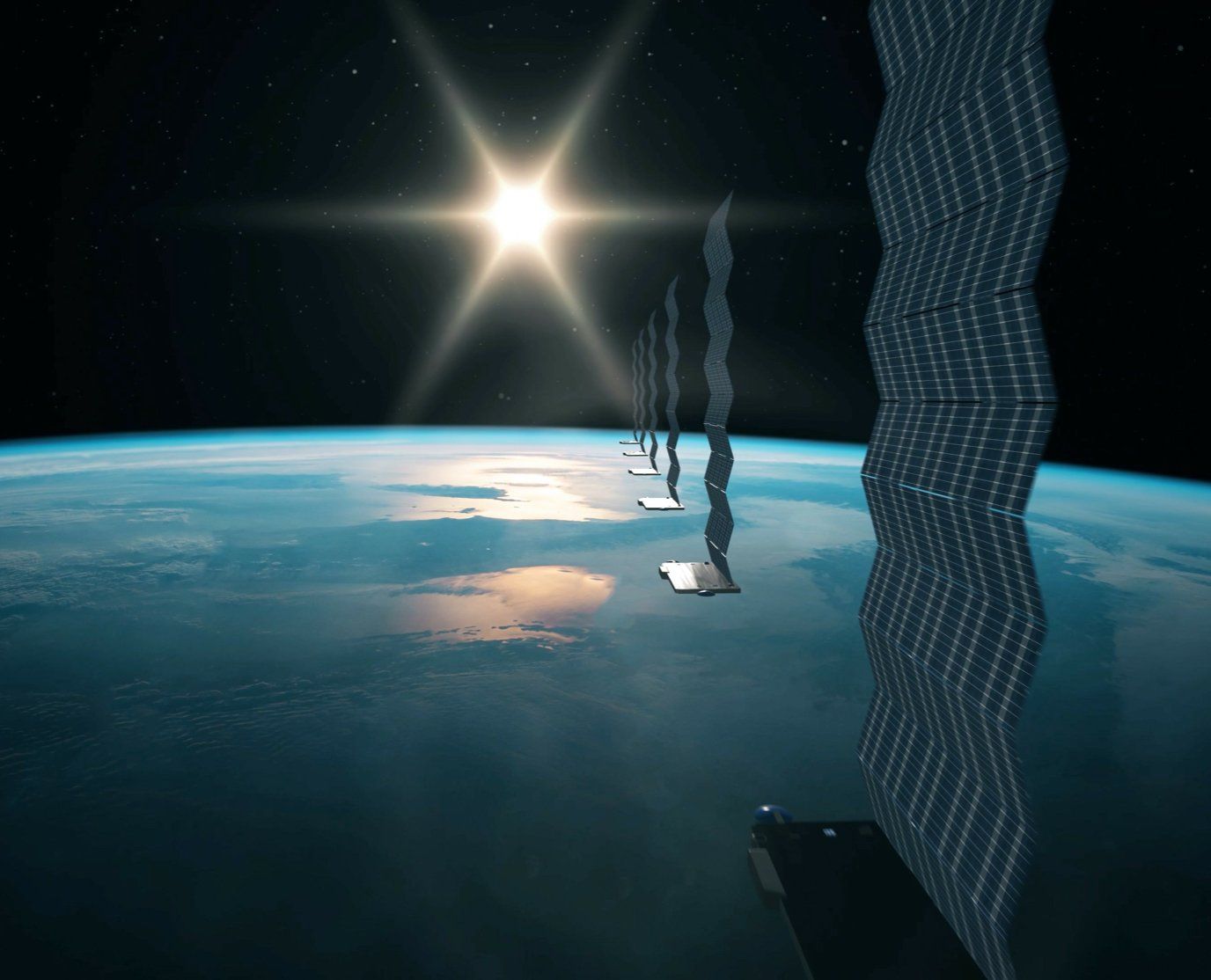7 - 11 November 2022
Space now belongs to emerging nations and the private sector

Emerging nations and companies heading into space (Image: Adobe)
More nations are emerging as space leaders, along with a growing private sector. With global communications, satellite imaging, space-based power, and celestial mining on offer, space is becoming no longer the realm of the few leading space nations, but a busy, and growing industrial sphere. The importance of space is being realised, not only for exploration and discovery, but for industrial use, and to address problems we currently face on Earth.
Leading space nations have been addressing the importance of space, exemplified in making responsive launch capability a priority. In previous weeks Virgin Orbit signed an agreement with Luxembourg, proving rapid launch capabilities allies and partners. Similarly, the US Space Force will be working with Millennium Space and Firefly in April next year in order to carry out a test run for the responsive launch of a satellite. When notified, the mission (named Victus Nox) will aim to rapidly integrate the satellite, and then launch within a 24 hour call-up window.
Responsive launch capabilities relate mostly to defence, in being able to deploy satellites at short notice, in repose to an attack, perhaps. The Ukraine conflict has been a fine example of this, with Starlink seen as a vital key to Ukraine’s upper-hand, and business leaders such as Ukrainian international entrepreneur, Dr Max Polyakov, seeing the role that space would play in the conflict, and by reaching out to satellite partners.
However, whilst much emphasis is put on space for the needs of defence, recent and upcoming missions are laying the foundations for a much bigger space economy, which can provide many more solutions for Earth’s problems.
New space nations evolving at great pace
Whilst leading space nations are paving the way for new space, and bigger role is being played by emerging space nations, such as UAE, UK, Korea and Australia. However, the new space superpowers of China and India are rapidly becoming the new leaders of innovation and technology, with the former presenting their latest vehicles at the 14th China International Aviation and Aerospace Exhibition this week.
Amongst their latest innovations, China presented their next generation rocket, designed for a manned lunar mission by 2027. Furthermore, it appears that China Academy of Launch Vehicle Technology (CALT) will abandon their previous Long March-9 rocket plans, in favour of a new 3 stage version, with a reusable first stage. Inspiration has no doubt been taken from SpaceX, in using reusability to revolutionise the industry and increase access to space.
India are also marching forwards with their space programme, providing satellite launches, and making plans for lunar and deep space exploration. As well as planning for missions to the moon and Mars, India are now in talks with JAXA (Japanese Aerospace Exploration Agency) in regards to sending a rover to the dark side of the moon, using an Indian-built lander and rover, sent into orbit with a Japanese rocket. Furthermore, the ISRO are developing their own space shuttle, with plans to soon demonstrate a runway landing.
India, and more so China, are the new space superpowers, and their leadership and influence will be highly sought after by emerging space nations. African nations are seen as an exciting area of growth, with the US, China and Europe all looking to build new relationships there. Uganda this week was the latest African nation to take its first steps into space, successfully launching its first satellite into orbit.

Commercial station lining up to replace ISS (Image: Adobe)
Private sector holds the keys to innovation and efficiency
Private companies continue to play an influential role in the growth of this new economy, and this week we have seen signs of India’s private sector growing in confidence. India’s first private rocket launch is due to take place this month, with launch startup Skyroot. This is a significant moment for their space industry, and symbolic of the rapid rise of India as a space nation.
Furthermore, Indian rocket startup Agnikul have tested their first, 3D printed, single-piece engine, in what will be the world’s first, and could be India’s strength over their competition. In the US, Sierra Space have begun searching for customers for their upcoming Orbital Reef station (a leading project t replace ISS), and Advanced Space have secured a US Air Force contract to send their Oracle spacecraft into cislunar orbit, designed to “…detect previously unknown objects through search and discovery, to detect small or distant objects, and to study spacecraft positioning and navigation in the XGEO (cislunar) realm,” said James Frith, the principal investigator. They are also responsible for operating the lunar CAPSTONE mission. Private companies are playing a key role in building the path towards our future in space.
Perhaps overshadowed by the upcoming launch of Artemis-1, Japanese lander company iSpace will be launching later this month, and this week received license from the Japanese government to conduct business on the moon. In their mission they will collect samples of lunar regolith and transfer ownership to NASA, in the first ever example of commercial resource utilisation. This could be a very significant step in regards to establishing and understanding the rules regarding resource utilisation and commercial activity on the moon, as nations struggle to establish universally accepted rules regarding such activity. Could this mission establish a new precedent?

Space-based solar power could reduce fossil fuel usage (Image: Adobe)
Space can help solve Earth’s big problems
All this investment and innovation in new space is geared towards many common goals, of using space to address problems we are encountering on earth. Sourcing energy, extracting precious minerals and increasing connectivity are becoming national priorities, and infrastructure in space is being built, in order to achieve these goals. Over the past weeks we have seen an increasing number of companies work towards developing this infrastructure in Earth orbit.
US Defense Advanced Research Projects Agency (DARPA) are developing a robotic arm, which will be incorporated into a Northrop Grumman satellite next year, due to launch in 2024. The technology is planned to be used for repairing and servicing ageing satellites. Young startup, Starfish Space, is looking to demonstrate how they can use low-cost satellites to connect with other vehicles in orbit, with the goal of using the technology for on-orbit serving and manufacture. Interest in Earth orbit is increasing, not only for its use for communications and Earth observation, but also seeing it as a springboard for deeper space exploration, and for technology such as space-based solar power and wireless power beaming. A reliable and sophisticated system will need to be in place in orbit, in order to support such projects.
Harnessing the power of the sun in orbit, and beaming the energy back to Earth, could be significant step towards reducing our reliance on fossil fuels. This type of wireless energy transmission was demonstrated this week at an Airbus factory in Munich, beaming energy over a 36m distance. This technology is being closely monitored by the ESA as part of their Solaris Programme.
The use of solar power will also be vital for extended human exploration on the moon, it being needed for everything from producing oxygen to rocket fuel on the lunar surface. Israeli expert, Prof Jeffrey Gordon, from Ben-Gurion University, believes that he has found a solution to the problem of dealing with the long lunar nights, by proposing a ring of solar arrays be placed around the lunar pole, meaning some of the panels will always be exposed to the sun.
We can see the power of innovation coming from not only leading space nations, but newer and emerging countries, and the private sector. They’re all making it possible to use space as means of bettering our future on Earth, through building the technology and infrastructure of the new space economy. The push for new space is a global challenge, with the rewards being beneficial for us all. We must continue to work together, to make new space a success for humanity and our planet.
External Links
This Week
*News articles posted here are not property of ANASDA GmbH and belong to their respected owners. Postings here are external links only.
Our future in space

Emerging nations and companies heading into space (Image: Adobe)
7 - 11 November 2022
Space now belongs to emerging nations and the private sector
More nations are emerging as space leaders, along with a growing private sector. With global communications, satellite imaging, space-based power, and celestial mining on offer, space is becoming no longer the realm of the few leading space nations, but a busy, and growing industrial sphere. The importance of space is being realised, not only for exploration and discovery, but for industrial use, and to address problems we currently face on Earth.
Leading space nations have been addressing the importance of space, exemplified in making responsive launch capability a priority. In previous weeks Virgin Orbit signed an agreement with Luxembourg, proving rapid launch capabilities allies and partners. Similarly, the US Space Force will be working with Millennium Space and Firefly in April next year in order to carry out a test run for the responsive launch of a satellite. When notified, the mission (named Victus Nox) will aim to rapidly integrate the satellite, and then launch within a 24 hour call-up window.
Responsive launch capabilities relate mostly to defence, in being able to deploy satellites at short notice, in repose to an attack, perhaps. The Ukraine conflict has been a fine example of this, with Starlink seen as a vital key to Ukraine’s upper-hand, and business leaders such as Ukrainian international entrepreneur, Dr Max Polyakov, seeing the role that space would play in the conflict, and by reaching out to satellite partners.
However, whilst much emphasis is put on space for the needs of defence, recent and upcoming missions are laying the foundations for a much bigger space economy, which can provide many more solutions for Earth’s problems.
New space nations evolving at great pace
Whilst leading space nations are paving the way for new space, and bigger role is being played by emerging space nations, such as UAE, UK, Korea and Australia. However, the new space superpowers of China and India are rapidly becoming the new leaders of innovation and technology, with the former presenting their latest vehicles at the 14th China International Aviation and Aerospace Exhibition this week.
Amongst their latest innovations, China presented their next generation rocket, designed for a manned lunar mission by 2027. Furthermore, it appears that China Academy of Launch Vehicle Technology (CALT) will abandon their previous Long March-9 rocket plans, in favour of a new 3 stage version, with a reusable first stage. Inspiration has no doubt been taken from SpaceX, in using reusability to revolutionise the industry and increase access to space.
India are also marching forwards with their space programme, providing satellite launches, and making plans for lunar and deep space exploration. As well as planning for missions to the moon and Mars, India are now in talks with JAXA (Japanese Aerospace Exploration Agency) in regards to sending a rover to the dark side of the moon, using an Indian-built lander and rover, sent into orbit with a Japanese rocket. Furthermore, the ISRO are developing their own space shuttle, with plans to soon demonstrate a runway landing.
India, and more so China, are the new space superpowers, and their leadership and influence will be highly sought after by emerging space nations. African nations are seen as an exciting area of growth, with the US, China and Europe all looking to build new relationships there. Uganda this week was the latest African nation to take its first steps into space, successfully launching its first satellite into orbit.

Commercial station lining up to replace ISS (Image: Adobe)
Private sector holds the keys to innovation and efficiency
Private companies continue to play an influential role in the growth of this new economy, and this week we have seen signs of India’s private sector growing in confidence. India’s first private rocket launch is due to take place this month, with launch startup Skyroot. This is a significant moment for their space industry, and symbolic of the rapid rise of India as a space nation.
Furthermore, Indian rocket startup Agnikul have tested their first, 3D printed, single-piece engine, in what will be the world’s first, and could be India’s strength over their competition. In the US, Sierra Space have begun searching for customers for their upcoming Orbital Reef station (a leading project t replace ISS), and Advanced Space have secured a US Air Force contract to send their Oracle spacecraft into cislunar orbit, designed to “…detect previously unknown objects through search and discovery, to detect small or distant objects, and to study spacecraft positioning and navigation in the XGEO (cislunar) realm,” said James Frith, the principal investigator. They are also responsible for operating the lunar CAPSTONE mission. Private companies are playing a key role in building the path towards our future in space.
Perhaps overshadowed by the upcoming launch of Artemis-1, Japanese lander company iSpace will be launching later this month, and this week received license from the Japanese government to conduct business on the moon. In their mission they will collect samples of lunar regolith and transfer ownership to NASA, in the first ever example of commercial resource utilisation. This could be a very significant step in regards to establishing and understanding the rules regarding resource utilisation and commercial activity on the moon, as nations struggle to establish universally accepted rules regarding such activity. Could this mission establish a new precedent?

Space-based solar power could reduce fossil fuel usage (Image: Adobe)
Space can help solve Earth’s big problems
All this investment and innovation in new space is geared towards many common goals, of using space to address problems we are encountering on earth. Sourcing energy, extracting precious minerals and increasing connectivity are becoming national priorities, and infrastructure in space is being built, in order to achieve these goals. Over the past weeks we have seen an increasing number of companies work towards developing this infrastructure in Earth orbit.
US Defense Advanced Research Projects Agency (DARPA) are developing a robotic arm, which will be incorporated into a Northrop Grumman satellite next year, due to launch in 2024. The technology is planned to be used for repairing and servicing ageing satellites. Young startup, Starfish Space, is looking to demonstrate how they can use low-cost satellites to connect with other vehicles in orbit, with the goal of using the technology for on-orbit serving and manufacture. Interest in Earth orbit is increasing, not only for its use for communications and Earth observation, but also seeing it as a springboard for deeper space exploration, and for technology such as space-based solar power and wireless power beaming. A reliable and sophisticated system will need to be in place in orbit, in order to support such projects.
Harnessing the power of the sun in orbit, and beaming the energy back to Earth, could be significant step towards reducing our reliance on fossil fuels. This type of wireless energy transmission was demonstrated this week at an Airbus factory in Munich, beaming energy over a 36m distance. This technology is being closely monitored by the ESA as part of their Solaris Programme.
The use of solar power will also be vital for extended human exploration on the moon, it being needed for everything from producing oxygen to rocket fuel on the lunar surface. Israeli expert, Prof Jeffrey Gordon, from Ben-Gurion University, believes that he has found a solution to the problem of dealing with the long lunar nights, by proposing a ring of solar arrays be placed around the lunar pole, meaning some of the panels will always be exposed to the sun.
We can see the power of innovation coming from not only leading space nations, but newer and emerging countries, and the private sector. They’re all making it possible to use space as means of bettering our future on Earth, through building the technology and infrastructure of the new space economy. The push for new space is a global challenge, with the rewards being beneficial for us all. We must continue to work together, to make new space a success for humanity and our planet.
Share this article
External Links
This Week
*News articles posted here are not property of ANASDA GmbH and belong to their respected owners. Postings here are external links only.
7 - 11 Nov 2022
Space now belongs to emerging nations and the private sector

Emerging nations and companies heading into space (Image: Adobe)
More nations are emerging as space leaders, along with a growing private sector. With global communications, satellite imaging, space-based power, and celestial mining on offer, space is becoming no longer the realm of the few leading space nations, but a busy, and growing industrial sphere. The importance of space is being realised, not only for exploration and discovery, but for industrial use, and to address problems we currently face on Earth.
Leading space nations have been addressing the importance of space, exemplified in making responsive launch capability a priority. In previous weeks Virgin Orbit signed an agreement with Luxembourg, proving rapid launch capabilities allies and partners. Similarly, the US Space Force will be working with Millennium Space and Firefly in April next year in order to carry out a test run for the responsive launch of a satellite. When notified, the mission (named Victus Nox) will aim to rapidly integrate the satellite, and then launch within a 24 hour call-up window.
Responsive launch capabilities relate mostly to defence, in being able to deploy satellites at short notice, in repose to an attack, perhaps. The Ukraine conflict has been a fine example of this, with Starlink seen as a vital key to Ukraine’s upper-hand, and business leaders such as Ukrainian international entrepreneur, Dr Max Polyakov, seeing the role that space would play in the conflict, and by reaching out to satellite partners.
However, whilst much emphasis is put on space for the needs of defence, recent and upcoming missions are laying the foundations for a much bigger space economy, which can provide many more solutions for Earth’s problems.
New space nations evolving at great pace
Whilst leading space nations are paving the way for new space, and bigger role is being played by emerging space nations, such as UAE, UK, Korea and Australia. However, the new space superpowers of China and India are rapidly becoming the new leaders of innovation and technology, with the former presenting their latest vehicles at the 14th China International Aviation and Aerospace Exhibition this week.
Amongst their latest innovations, China presented their next generation rocket, designed for a manned lunar mission by 2027. Furthermore, it appears that China Academy of Launch Vehicle Technology (CALT) will abandon their previous Long March-9 rocket plans, in favour of a new 3 stage version, with a reusable first stage. Inspiration has no doubt been taken from SpaceX, in using reusability to revolutionise the industry and increase access to space.
India are also marching forwards with their space programme, providing satellite launches, and making plans for lunar and deep space exploration. As well as planning for missions to the moon and Mars, India are now in talks with JAXA (Japanese Aerospace Exploration Agency) in regards to sending a rover to the dark side of the moon, using an Indian-built lander and rover, sent into orbit with a Japanese rocket. Furthermore, the ISRO are developing their own space shuttle, with plans to soon demonstrate a runway landing.
India, and more so China, are the new space superpowers, and their leadership and influence will be highly sought after by emerging space nations. African nations are seen as an exciting area of growth, with the US, China and Europe all looking to build new relationships there. Uganda this week was the latest African nation to take its first steps into space, successfully launching its first satellite into orbit.

Commercial station lining up to replace ISS (Image: Adobe)
Private sector holds the keys to innovation and efficiency
Private companies continue to play an influential role in the growth of this new economy, and this week we have seen signs of India’s private sector growing in confidence. India’s first private rocket launch is due to take place this month, with launch startup Skyroot. This is a significant moment for their space industry, and symbolic of the rapid rise of India as a space nation.
Furthermore, Indian rocket startup Agnikul have tested their first, 3D printed, single-piece engine, in what will be the world’s first, and could be India’s strength over their competition. In the US, Sierra Space have begun searching for customers for their upcoming Orbital Reef station (a leading project t replace ISS), and Advanced Space have secured a US Air Force contract to send their Oracle spacecraft into cislunar orbit, designed to “…detect previously unknown objects through search and discovery, to detect small or distant objects, and to study spacecraft positioning and navigation in the XGEO (cislunar) realm,” said James Frith, the principal investigator. They are also responsible for operating the lunar CAPSTONE mission. Private companies are playing a key role in building the path towards our future in space.
Perhaps overshadowed by the upcoming launch of Artemis-1, Japanese lander company iSpace will be launching later this month, and this week received license from the Japanese government to conduct business on the moon. In their mission they will collect samples of lunar regolith and transfer ownership to NASA, in the first ever example of commercial resource utilisation. This could be a very significant step in regards to establishing and understanding the rules regarding resource utilisation and commercial activity on the moon, as nations struggle to establish universally accepted rules regarding such activity. Could this mission establish a new precedent?

Space-based solar power could reduce fossil fuel usage (Image: Adobe)
Space can help solve Earth’s big problems
All this investment and innovation in new space is geared towards many common goals, of using space to address problems we are encountering on earth. Sourcing energy, extracting precious minerals and increasing connectivity are becoming national priorities, and infrastructure in space is being built, in order to achieve these goals. Over the past weeks we have seen an increasing number of companies work towards developing this infrastructure in Earth orbit.
US Defense Advanced Research Projects Agency (DARPA) are developing a robotic arm, which will be incorporated into a Northrop Grumman satellite next year, due to launch in 2024. The technology is planned to be used for repairing and servicing ageing satellites. Young startup, Starfish Space, is looking to demonstrate how they can use low-cost satellites to connect with other vehicles in orbit, with the goal of using the technology for on-orbit serving and manufacture. Interest in Earth orbit is increasing, not only for its use for communications and Earth observation, but also seeing it as a springboard for deeper space exploration, and for technology such as space-based solar power and wireless power beaming. A reliable and sophisticated system will need to be in place in orbit, in order to support such projects.
Harnessing the power of the sun in orbit, and beaming the energy back to Earth, could be significant step towards reducing our reliance on fossil fuels. This type of wireless energy transmission was demonstrated this week at an Airbus factory in Munich, beaming energy over a 36m distance. This technology is being closely monitored by the ESA as part of their Solaris Programme.
The use of solar power will also be vital for extended human exploration on the moon, it being needed for everything from producing oxygen to rocket fuel on the lunar surface. Israeli expert, Prof Jeffrey Gordon, from Ben-Gurion University, believes that he has found a solution to the problem of dealing with the long lunar nights, by proposing a ring of solar arrays be placed around the lunar pole, meaning some of the panels will always be exposed to the sun.
We can see the power of innovation coming from not only leading space nations, but newer and emerging countries, and the private sector. They’re all making it possible to use space as means of bettering our future on Earth, through building the technology and infrastructure of the new space economy. The push for new space is a global challenge, with the rewards being beneficial for us all. We must continue to work together, to make new space a success for humanity and our planet.
Share this article
External Links
This Week
*News articles posted here are not property of ANASDA GmbH and belong to their respected owners. Postings here are external links only.

























